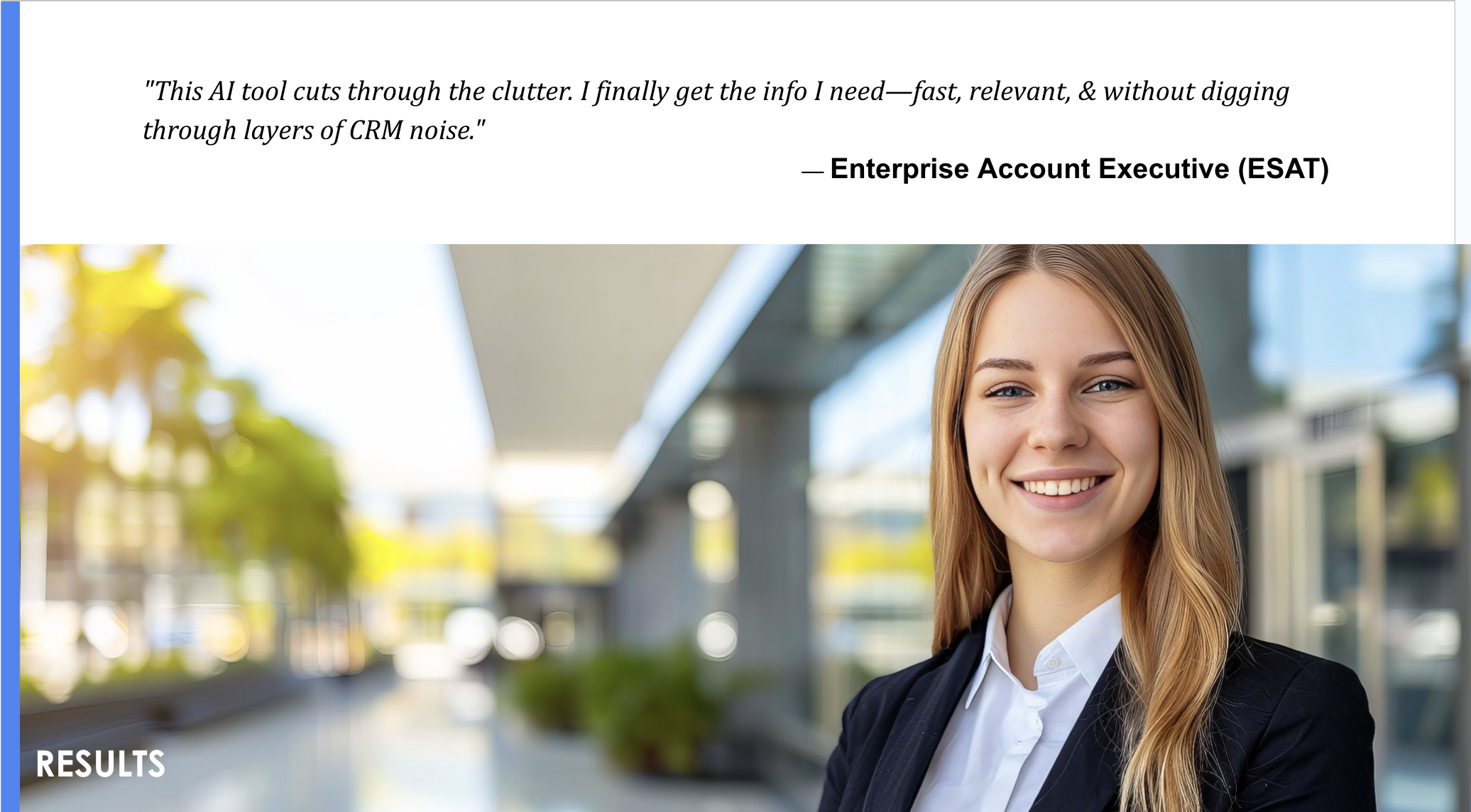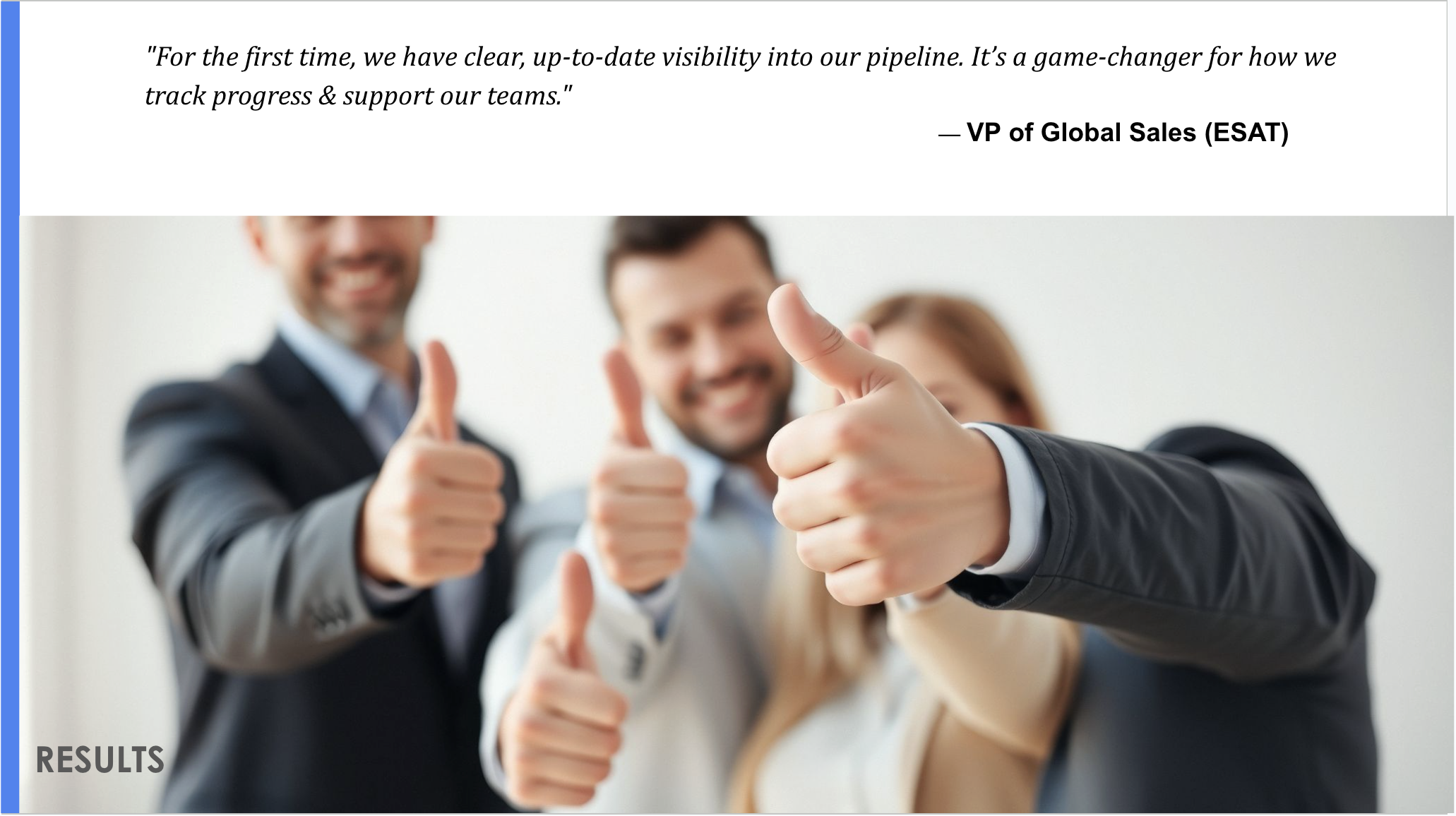Optimizing Sales Intelligence – AI-Powered CRM Transformation

Why
At ServiceNow, the existing CRM system used by the Sales Team Globally, was cluttered and underutilized, with average usage at just 12% MoM. Sales teams—including SDRs, LDRs, AEs, and digital reps—found it time-consuming and frustrating in locating critical information like contracts (new & existing), licenses, account plans, opportunities, seller notes and much more.
The lack of adoption led to significant downstream issues: leadership had poor visibility into sales pipelines, forecasting gaps widened, and decision-making was often misinformed. ServiceNow brought me in to uncover user workflow pain points and also support the design of an AI-powered, role-specific tool that surfaced relevant CRM data. This was to streamline workflows, reduced friction, increase productivity and efficiency and most of all -- rebuilt trust on the CRM tool, which was underutilized.
How
My approach to investigating the space unfolded in the following stages:
- In-Depth Interviews & Workflow Mapping (N=15, 2 weeks)
- I interviewed 15 sales team member across five sales roles.
- I then mapped their workflows, identified pain points, and highlighted where CRM processes were broken, reason why these users did not use the tool.
- This directly informed AI feasibility and personalization strategies -- aimed to reduce user challenges and provide a improved experience.
- Feature & Data Prioritization Survey (N=82, 2 weeks)
- Used a feature stacking survey to identify high-priority tasks and data by role.
- Insights guided AI model training (what to build first) and UX design priorities (what to show first).
- Co-Design Sessions (1.5 weeks)
- Conducted co-design sessions with 15 participants, individually, to help design a role-specific layouts using Miro boards and feature cards.
- This activity helped define the information architecture and interface structure of the AIs now user centric User Interface, aligned to real-world workflows.
- The product was launched after integrating my research recommendations and an understanding of conducting a post launch survey to see if the product was working as intended for its end users.
- Post-Launch ESAT Survey (N=148, 6 weeks later)
- The survey helped measure the helpfulness, accuracy, and satisfaction of the users with the tool.
- The Survey revealed a high adoption and usage alongside helpful feedback for future iterations.
Research Findings – What Was Learned
- Fragmented Workflows: Sales reps wasted time switching between multiple systems to gather contracts, licenses, and account notes—leading to incomplete handoffs and duplicated work.
- Low Discoverability: Critical documents like account plans and opportunities were buried, requiring up to 7–10 clicks to access.
- Role Misalignment: The CRM interface was “one-size-fits-all,” forcing SDRs, AEs, and digital reps to wade through irrelevant data instead of surfacing what mattered most to their role.
- Erosion of Trust: Because of outdated data and poor usability, many sellers kept private notes outside the CRM, further reducing visibility for leadership.
- High Willingness to Adopt: Despite frustrations, users expressed openness to a solution that streamlined access and personalized data—showing strong appetite for an AI-driven fix.
Impact
- Adoption: 96% of sellers engaged with the AI tool within the first month—up from ~12% CRM usage.
- Productivity: ESAT results showed sellers saved ~30 minutes per task using the AI tool.
- Discoverability: Design improvements helped sales team members access relevant information significantly faster, cutting through CRM clutter.
- Data Quality: AI-driven inputs improved consistency, reduced manual errors, and generated accurate pipeline and sales data.
- Leadership Visibility: Leaders reported clearer pipelines, increased confidence in forecasting, and better insights.
- Cross-Team Spread: Adoption extended beyond sales to include customer success and account management teams, who reported their satisfaction and happiness with the new and improved AI Powered CRM and its role relevant characteristic via the post launch survey.
User Quotes

